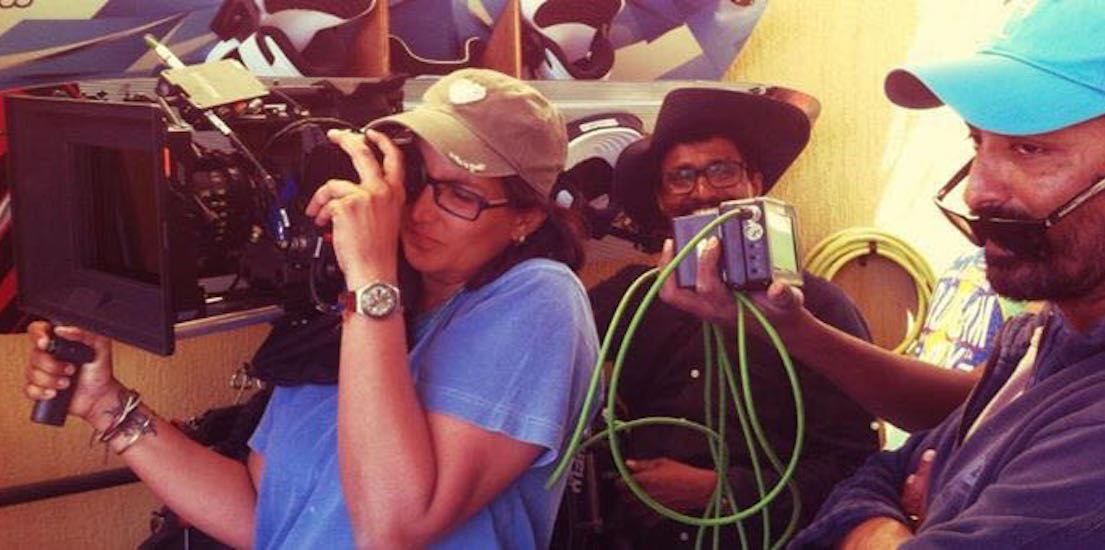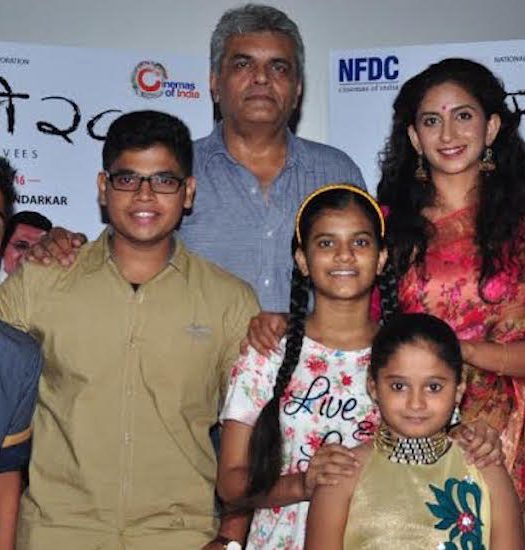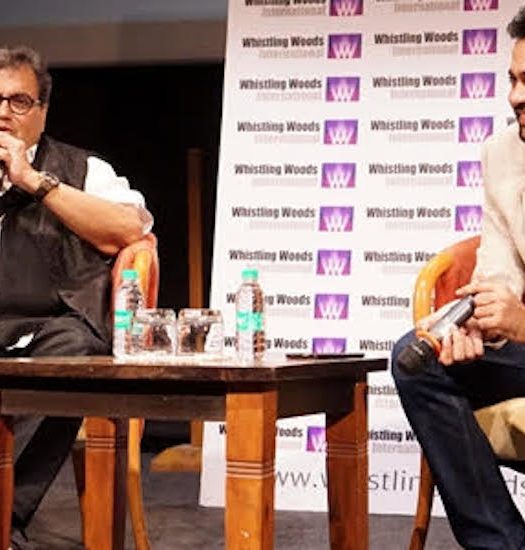The visual brief of Airlift Came from the script Itself – Priya
The soon-to-release film Airlift has been creating noise for all the right reasons. One among them being the unique look and the way the film has been shot. And the person responsible for this is none other than the Cinematographer, Priya Seth. Pandolin caught up with the talented lady to understand all that went into the making of this action thriller and how the core objective was to stay true to the narrative at any given point. Here are excerpts from the conversation.

Cinematographer Priya Seth
Airlift is your second full-fledged feature as a cinematographer. What excited you about this project? And how were you approached for it?
It’s made by the same director – Raja Menon – with whom I did my first film called Barah Aana. We go back a long way and have worked together a lot. So when he came up with this project, of course I wanted to do it! It’s an incredibly exciting script. And it’s my first mainstream Hindi film, so to say.
Having worked with Director Raja Menon earlier as well, how would you describe the association this time around? Did he have a visual brief for Airlift?
I think what we have going with each other is an incredible sense of understanding towards each others work. We have put in intense prep of almost three months before this film. We did multiple recces, sat together and discussed a lot.
I think the visual brief came from the script itself. And the key visual of that time period, which got the ball rolling in terms of what the film would be graded like came from the Production Designer Mustafa Stationwala and our Direction team. They did an intense amount of research about Kuwait in 1990 and dug up incredible pictures. We would all sit together and discuss the visuals. The idea for something visual could come from the sound designer, production design or anyone else. There is a congruous single visual look and it all comes from the material.
READ: AIRLIFT IS AN IMPORTANT STORY FROM AN IMPORTANT EVENT – RAJA MENON
Since the film is inspired by real life events, what did your research entail?
We did a lot of referencing but by references I don’t mean that we took visuals off the net and decided the look. We didn’t reference a single film. Our references were much more philosophical in the kind of story we were trying to tell – about certain kind of people, a certain time period and so on. We referenced the time period in great detail – how was the Middle East in the 90s, what was the aesthetic, what was the visual etc. It wasn’t so much a question of what we wanted the film to look like but more about the kind of story we wanted to tell. And we wanted to tell the story with complete integrity.
At the scripting stage itself Raja had several conversations with many people. A lot of the characters are based on people who were present at that time though their names might be different. When the rest of the team got on board, everyone was trying to find contacts. I was looking for visuals references, documentaries or footage. I also found a photojournalist who had done an entire book on Operation Desert Storm. For me it was more about knowing what visuals were true to the time period – what did the Middle Eastern sunlight look like at that time, how hot was it and so on.
How did you’ll get the appropriate locations? And what were the criteria for selecting them?
The film is based in 1990 in Kuwait. So automatically we get into something that doesn’t exist anymore. It’s a period film. Kuwait does not look like that anymore and has become like another modern Middle Eastern country. So we couldn’t shoot there. One of the other location options at that time was Beirut in Lebanon. But that is a war zone and would have been completely wrong. What happened in 1990 in Kuwait was not a bombed-out war zone. Iraq just came in and took over. And we needed to find a place in the Middle East because we couldn’t recreate cities like that in India. So someone suggested Ras al-Khaimah, which is one of the seven emirates but probably the least developed one. Physically, location wise it was just like the 90s Kuwait. A small little town where there weren’t too many high-rise glass buildings. It had more of low-rise concrete and cement structures. And it just worked.

Still from Airlift
Tell us about the camera and set up you worked with.
We worked with ALEXA. It was a two – camera setup most of the time. But it was interesting because the second camera was never really shooting what the first camera was. We never did a wide and tight kind of situation. We would set up entire streets for our action pieces with cars burning, people fighting etc. One camera would be with me, shooting the film. The second camera was with my second camera operator who was hiding and shooting documentary style footage. The entire street had background artists doing specific things and various smaller stories were going on throughout. So in the trailer you can see that a lot of footage looks grabbed, because it is grabbed.
We have used a mix of Handheld and Steadicam. We used the dolly in the beginning when it’s a languid time and things are fine. So I wanted the camera to flow smoothly. Once the war breaks then it was more of Steadicam and Handheld. An action piece that was a one-shot sequence was shot completely on a remote head, as I wanted it to be completely smooth.
READ: I HAD TO HOLD BACK FROM BEING A HERO – AKSHAY KUMAR
And how did you go about the framing and lensing?
I never saw the zoom for the entire film. It was a deliberate choice, as we wanted it to be in-your-face. Whether it was the streets or the camp we wanted to show layers and layers of what is going on in the background. We were always using Prime lenses. Even for a close-up we would come in with a wide lens so that the background – we had remarkable actors and action in the background – was clearly visible.
The film seems to have a subtle color palette. Please throw light on the grade adopted for the film and why?
We can all be flashy when we’re shooting and show off. But the biggest struggle I had on this film was to hold myself back. And do only whatever is right for the material. Everything is restrained and everyone held back. It’s an action film but we are not doing high-speed action and trying to glamorize it. All the action is raw, in-your-face, 24 frames. The action is going to come at you, unexpectedly; constantly. It was just the aesthetic we decided for the film, as we wanted to be true to the story. Likewise, the grade was part of a much larger muted palette, which was a combination of the production design, lighting and costumes. The look of the film wasn’t just decided at the grade stage but was a careful collaboration from the start.
So what was the approach to the action sequences? And how much of it – the bomb blasts, gunfire etc. – was shot versus being VFX generated?
I’d say 50-50. We shot a lot and did a lot of VFX but hopefully you cannot see where the VFX is. A large part of the blasts were live.
Raja and I were very clear about how we would shoot the action. We were not going to do any wirework and no cars would be flying. We have done a lot of long set piece action where we set up entire streets and captured the entire action in one shot. We did two action sequences in one shot each. And that was shot with a single camera.

Priya Seth on location of Airlift
There are several aerial shots in the film. How ere they captured?
We used the Red Epic for the aerial shots. The Octocopter team came in from Norway. We tested a lot of people in India but unfortunately were unable to find anyone experienced enough to be able to deliver the outcome that we expected. With an Octocopter team it’s not so much about the camera operator but more about the pilot. You need really experienced pilots. And we had a lot of shots that were in motion like you can see in the promo. And it gets tricky when you’re trying to do high-speed movement shots with the Octocopter.
What was the lighting design employed for the film – for interior and exterior shots?
A lot of the indoor scenes were shot in the Middle East itself; we shot very little here. For these sequences, I wanted a sense of heat in the room, in a way that even if you’re inside there’s always a palpable sense that the sun is outside. In the Middle East the sun doesn’t come into the home and you’re always trying to block the light out. So the only way you can perceive the light is not on people or faces but on the windows. The interiors otherwise have a sense of coolness because they are air-conditioned. In the camp there’s a sense of heat in the lighting. Sometimes I shot without any light because it looked right for the scene.
For the exteriors I always use natural light. And we were mostly molding the light. With the ALEXA it’s more a matter of removing light than adding it. And because we were so prepped we managed to be at a location for the right light that we wanted to shoot in.
When it comes to lighting I believe that if you get the ‘why’ correct – why I want to light a room in a certain way, what is it that I’m trying to tell – then ‘what’ I do will come from that. If you get the answer to that, then details like which light am I using, where will it be placed, which gels I use, come organically. How you come upon the decision to make the space look a certain way is far more important to me than the technical specifications of the equipment used.
How many songs does the film have and were they approached differently from the narrative?
There are four songs in the film and they are integrated in the narrative. When we were shooting the songs we were very clear about what we didn’t want to do. We wanted to be true to the style of the film. And it’s a period film that belongs to a very difficult period because the 90s weren’t a spectacular period – not so defined or definitive.
What were the difficulties you encountered during this shoot?
It was a tough film – physically very tough because of the kind of film we were doing. And mentally because of the subject we were dealing with.
How many days was the film shot in?
We shot the film in a record number of 49 days with three days for a song.

Making of Airlift
According to you what sets Airlift apart from the other films in this genre, like Baby etc.
Whether the film looks different or not is for others to decide. But to me this was the way it looked right. Where it does stand out is that it is very raw. There were commitments that we made to certain kinds of narrative and we stuck to it till the end.
You also shoot several ad films. How different are the two mediums in terms of cinematography?
To simplify it, they are the same thing. But they couldn’t be more dissimilar as the approach is completely different. When you go into advertising, you’re trying to make beautiful visuals because you’re trying to sell something in the shortest possible time. It allows you to hone your craft in terms of finesse and time. And a film is all about the narrative. I love this medium and would love to do more of it to be able to tell stories.
The team –
Assistant and second unit DOP Sajid Sanwari
Second Assistant – Suraj Kurade
Steadicam Operator – Devendra Das and Pranav Rawal
Gaffer – Mahendra
Colorist – Robert Lang from After Studios
Focus Pullers – Imran Khan, Kusuma Chandra Mohan, Goutam Ghosh
Post Production – After Studios
VFX – Riva Digital



